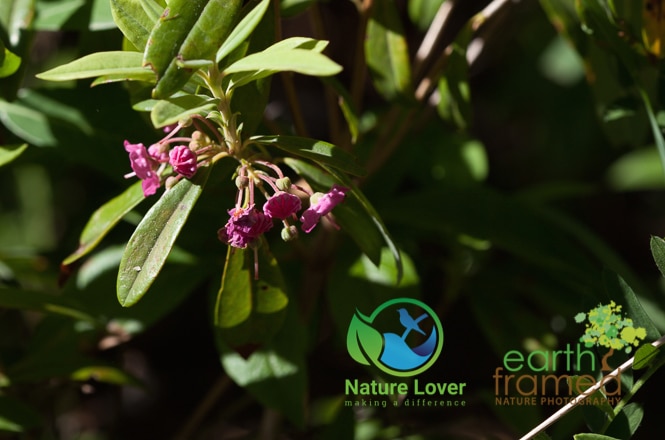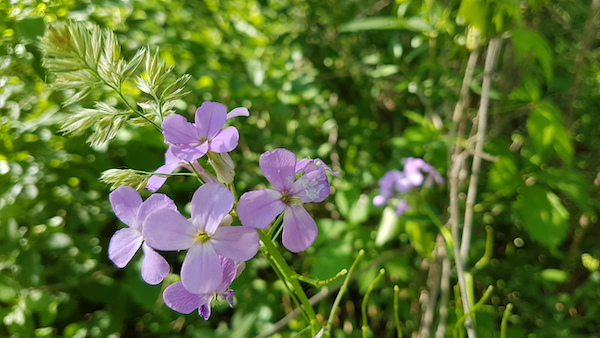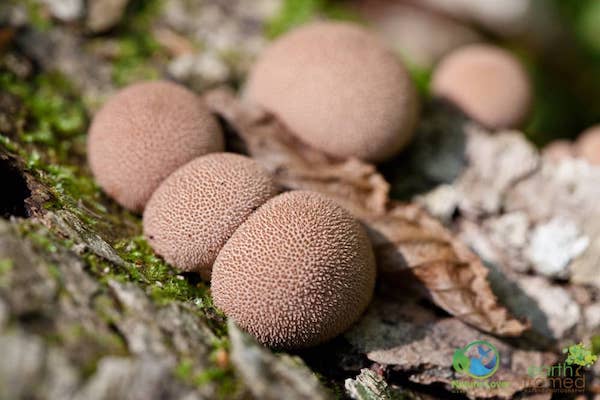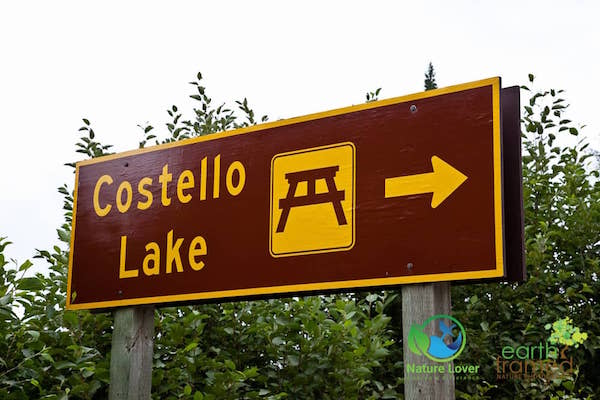Halfway Lake is located on the southern edge of the boreal forest but is considered to be part of the Great Lakes – St. Lawrence Forest region. This means that there are mixed, hardwood forests and many species of plants are either at their southern or northern range.
While at Halfway Lake Provincial Park we didn’t see a huge variety of wildflowers and plants. Is that because the area has a shorter growing season, more frequent forest fires or because the soil just doesn’t support the diversity? I’m not sure but here’s what I found to photograph during our few days at the park.
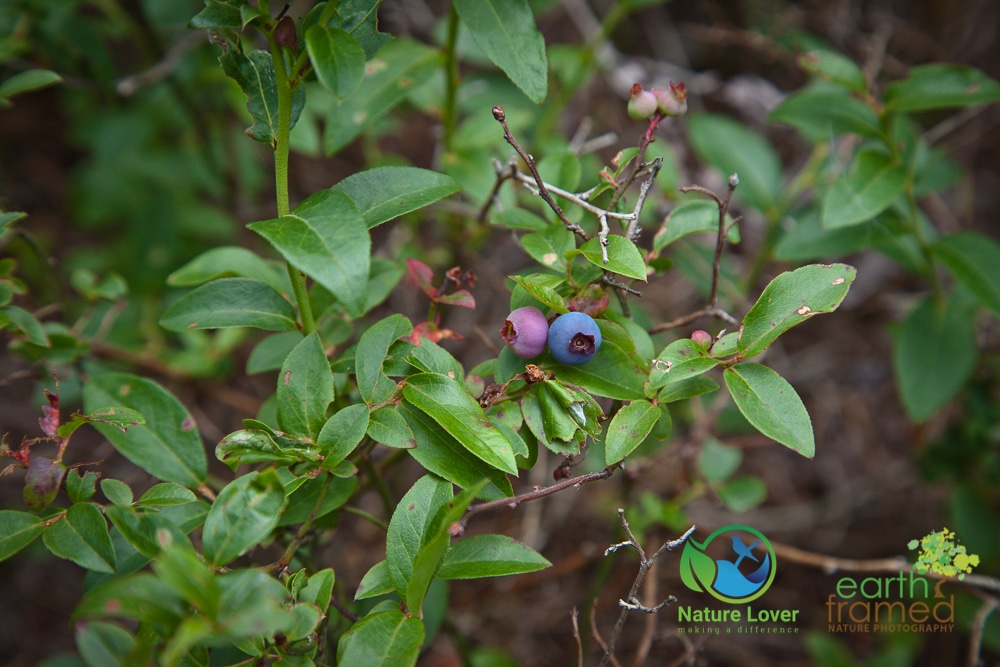
Along our hike of the Echo Pond Trail we saw a lot of wild blueberries, most not yet ripe and definitely struggling with the heat and lack of rain during the growing season. 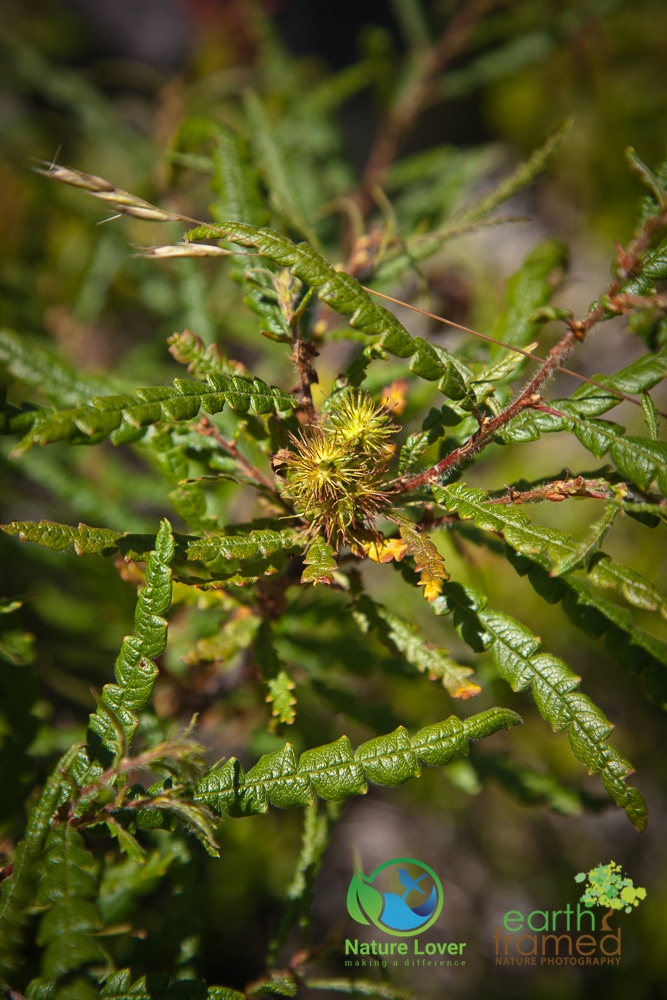
This very unique leafed deciduous shrub is called Sweet-fern, which is a shrub, not a fern. The fruits can be seen in this picture and they are described as “bur-like, bristly catkins”. Inside the catkin is an edible nutlet, otherwise known as a small nut. 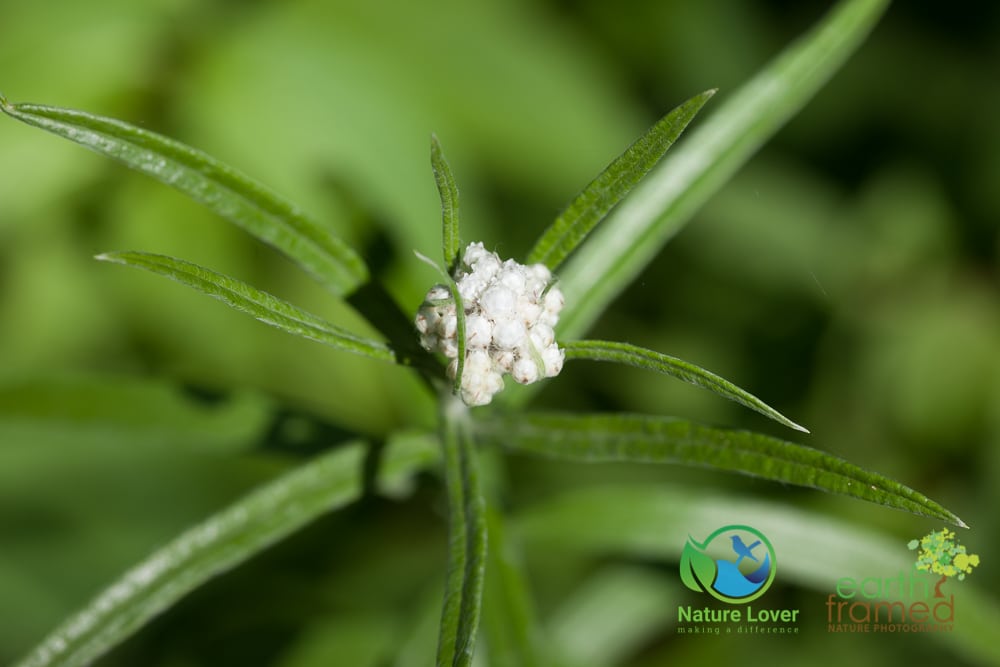
This native plant is Pearly Everlasting and is often used in flower arrangements. It is an important larval host for skippers, moths and American Painted Lady.  This beautiful plant is Bog Laurel. It is an evergreen plant, which means it will stay green year round, and it can be poisionous to humans and animals, if it is ingested. You can find this plant in moist upland areas like conifer swamps and sphagnum bogs. Having said that, this one was found around a tree near the Halfway Lake beach area.
This beautiful plant is Bog Laurel. It is an evergreen plant, which means it will stay green year round, and it can be poisionous to humans and animals, if it is ingested. You can find this plant in moist upland areas like conifer swamps and sphagnum bogs. Having said that, this one was found around a tree near the Halfway Lake beach area. 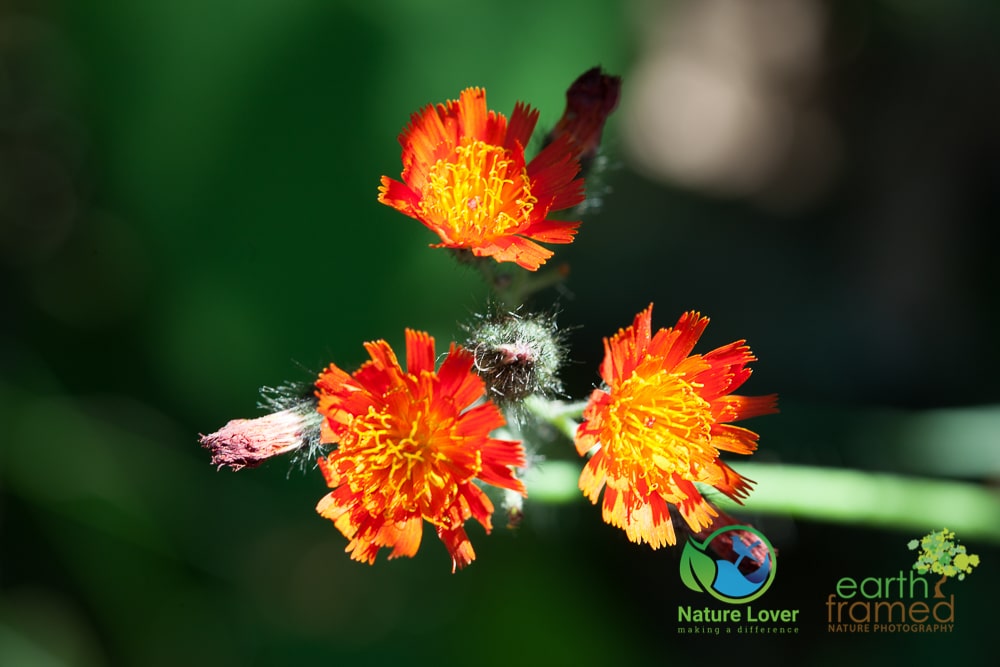 All summer we saw a lot of orange and the yellow Hawkweed. These perennials were introduced from Europe but our white-tailed deer, ruffed grouse and wild turkey will feed on it.
All summer we saw a lot of orange and the yellow Hawkweed. These perennials were introduced from Europe but our white-tailed deer, ruffed grouse and wild turkey will feed on it.
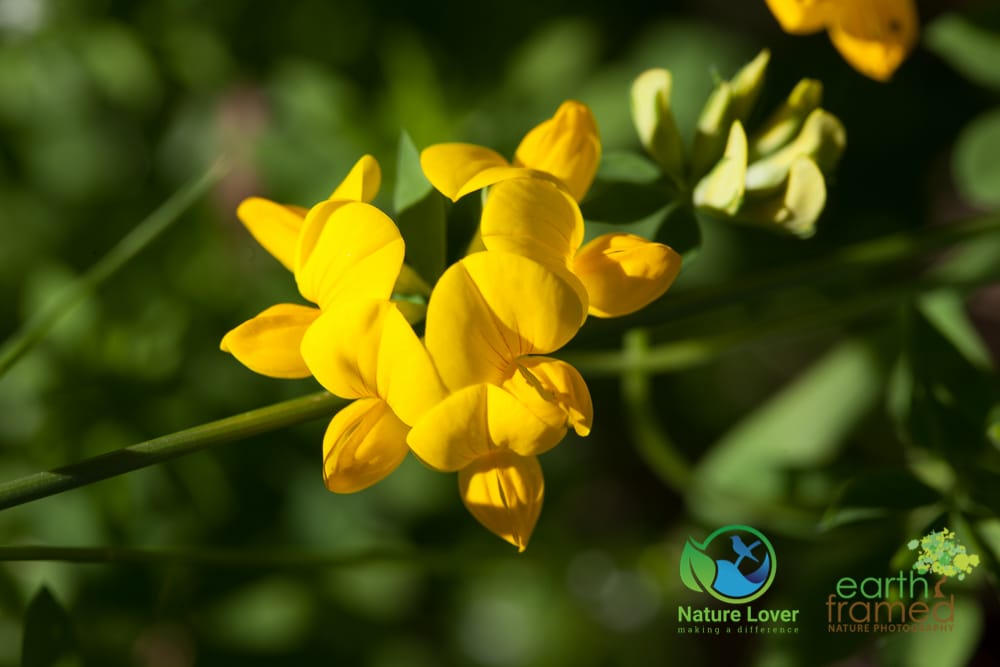
Birdsfoot trefoil is a common, non-native plant found throughout most of North America. This striking plant is part of the pea family, resembles clover and is often visited by bumble bees.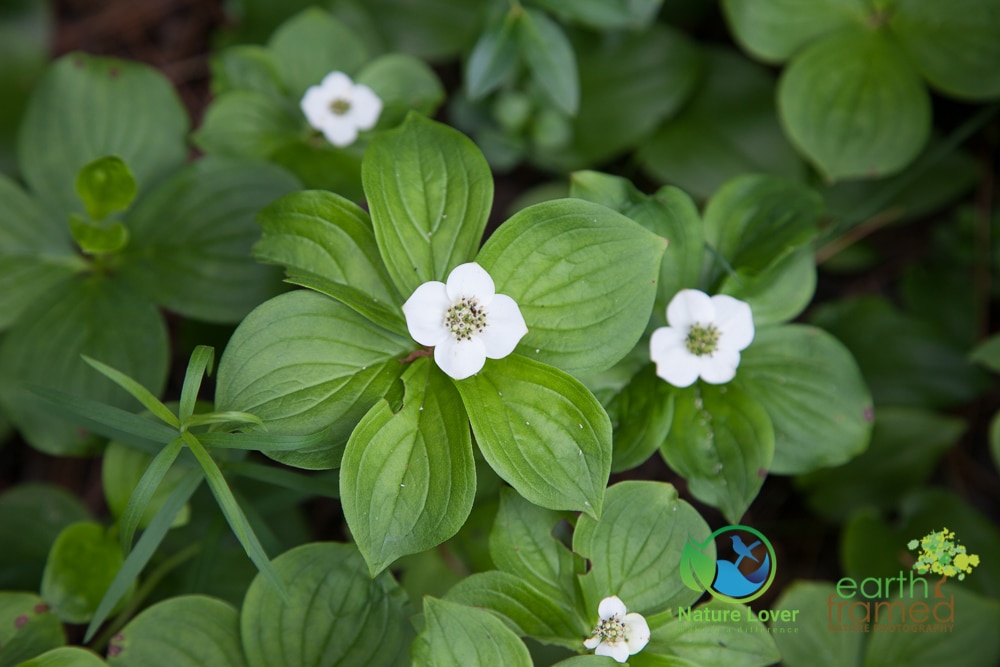 We frequently came across this plant during most of our trip to central Ontario. Bunchberry is the only flower, or herb, in the dogwood group. The white flowers will become a cluster of bright red fruit later in the season.
We frequently came across this plant during most of our trip to central Ontario. Bunchberry is the only flower, or herb, in the dogwood group. The white flowers will become a cluster of bright red fruit later in the season.
It is always interesting to pay attention to the wildflowers you spot during hikes through different areas and during different seasons. Identifying them is sometimes challenging but rewarding. I use a variety of books and websites to try to identify flowers and am constantly learning and attempting to memorize them as I go.
Sources:
“BOREALFOREST.ORG Shrub Species of Northwestern Ontario Forests.” www.borealforest.org/shrubs.htm. Accessed 2 Nov. 2016.
Chambers, Brenda, et al. Forest Plants of Central Ontario. Lone Pine, 1996.
National Audubon Society Field Guide to North American Wildflowers: Eastern. 2001.


